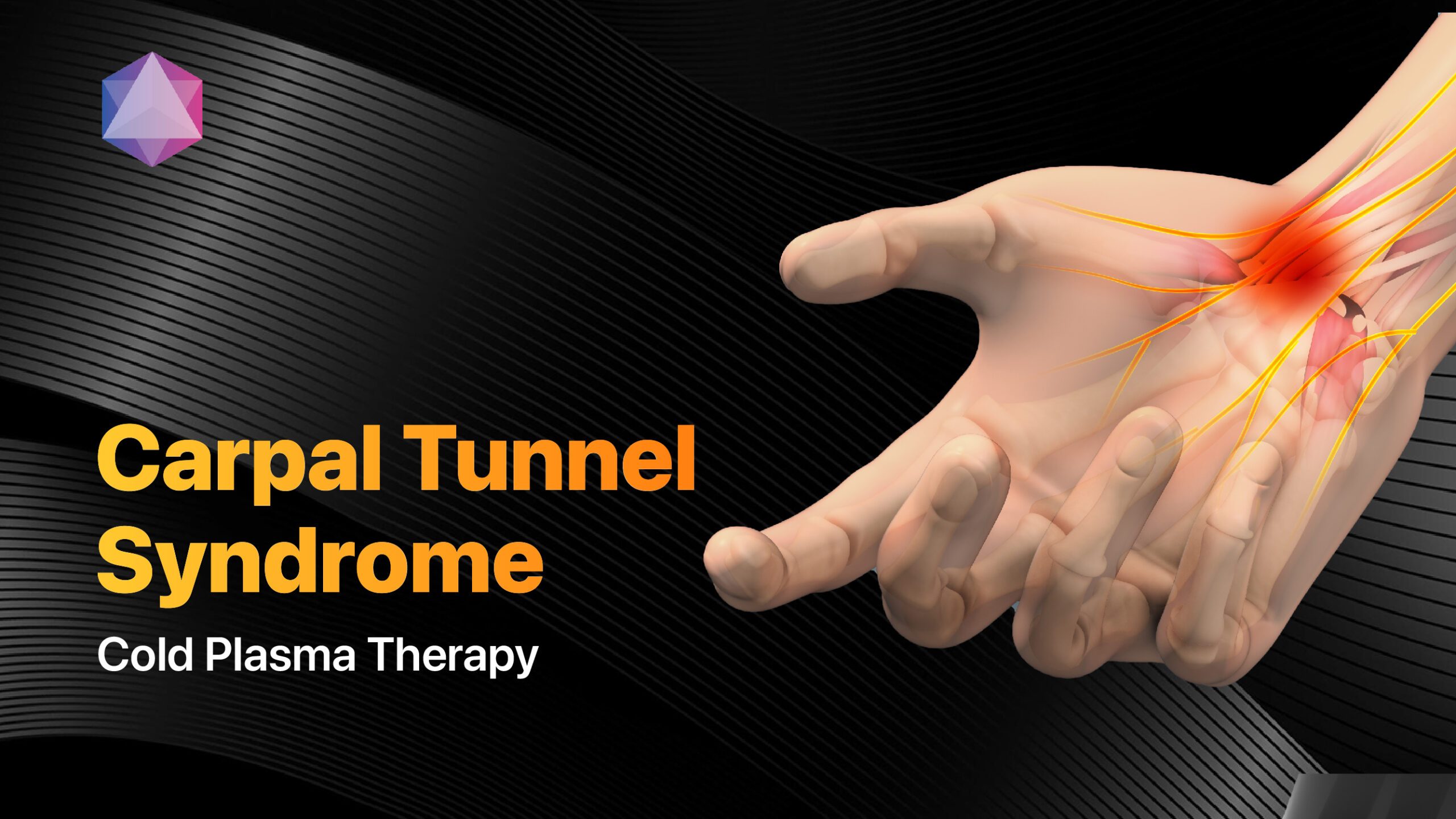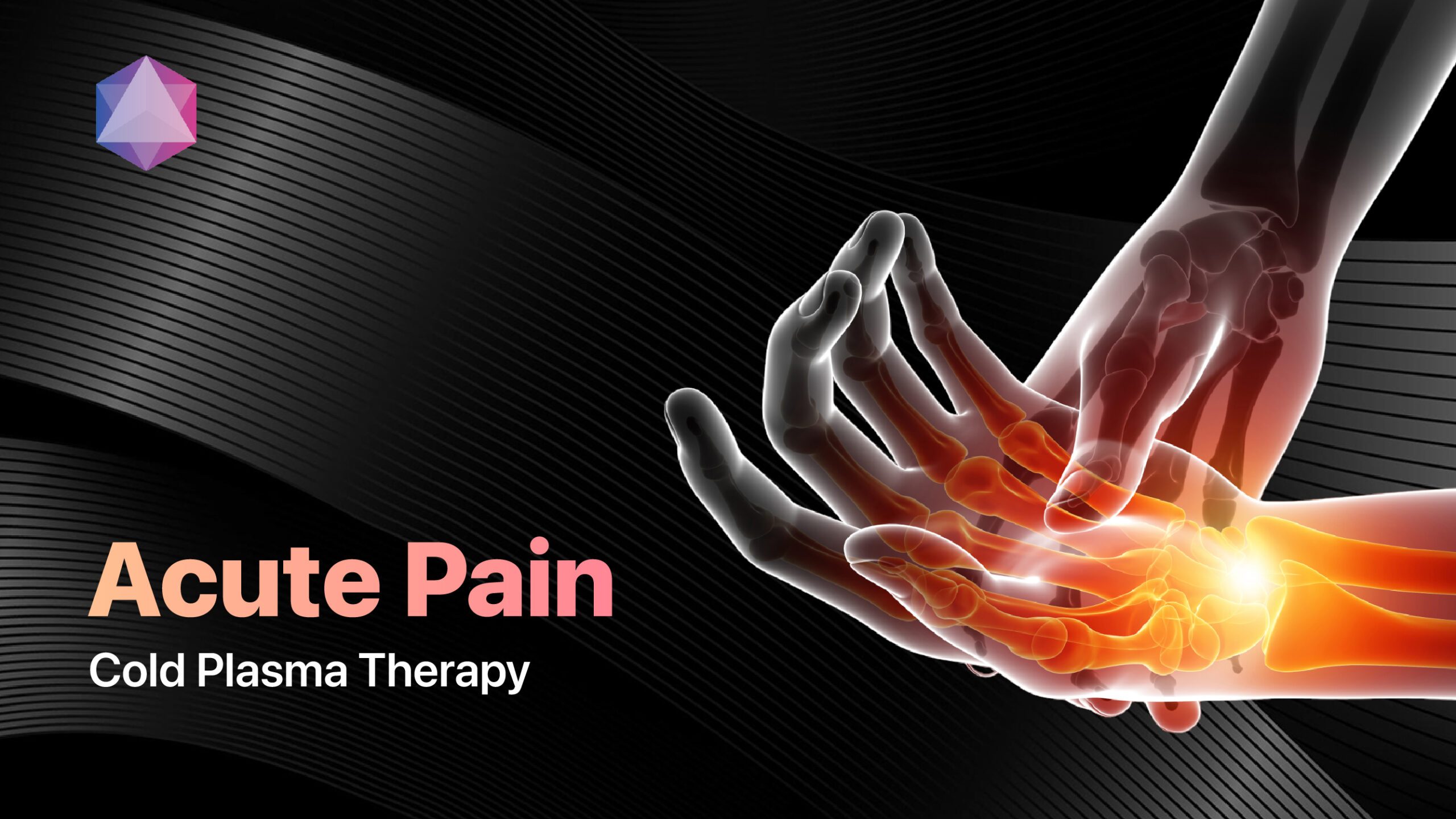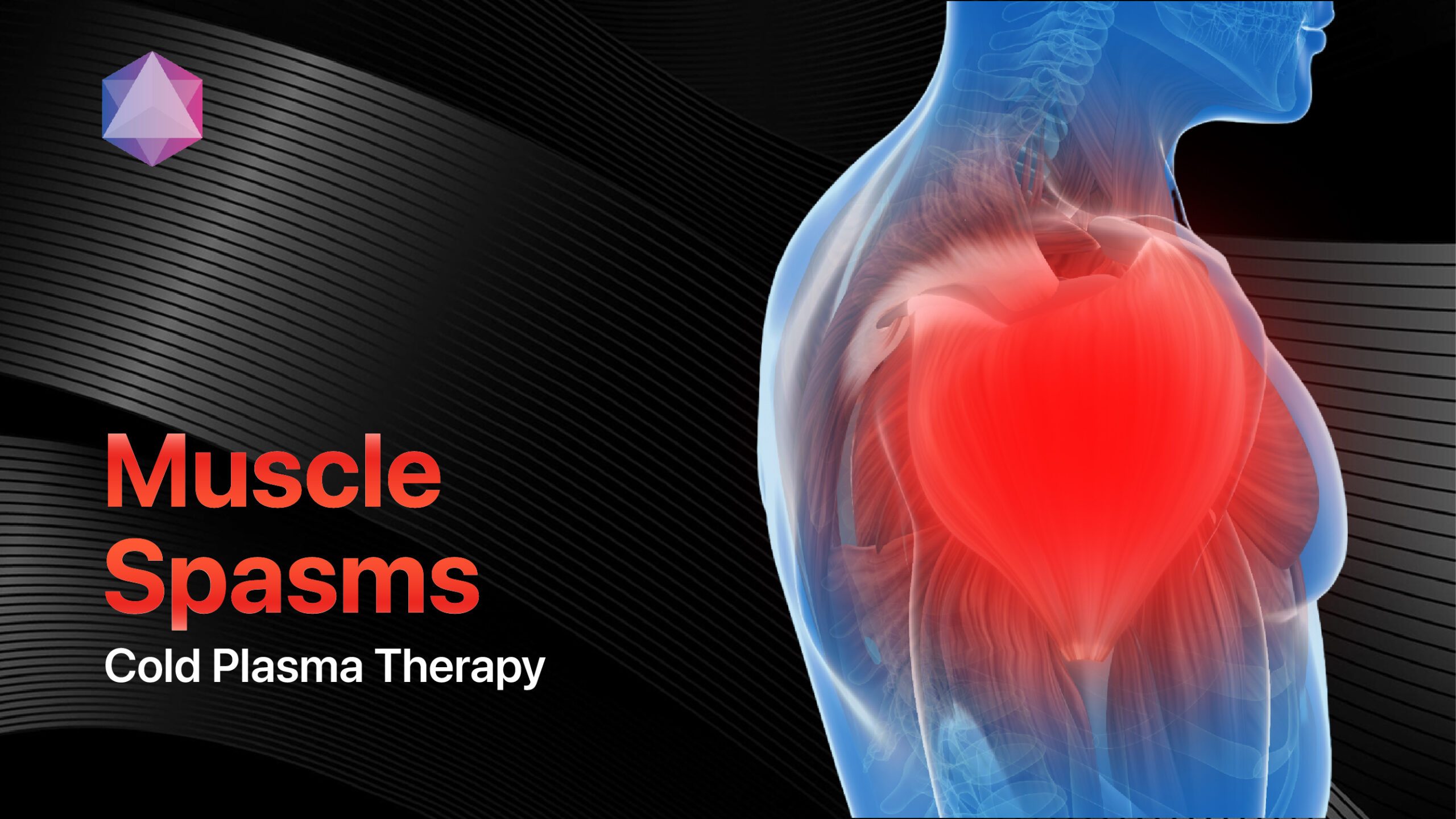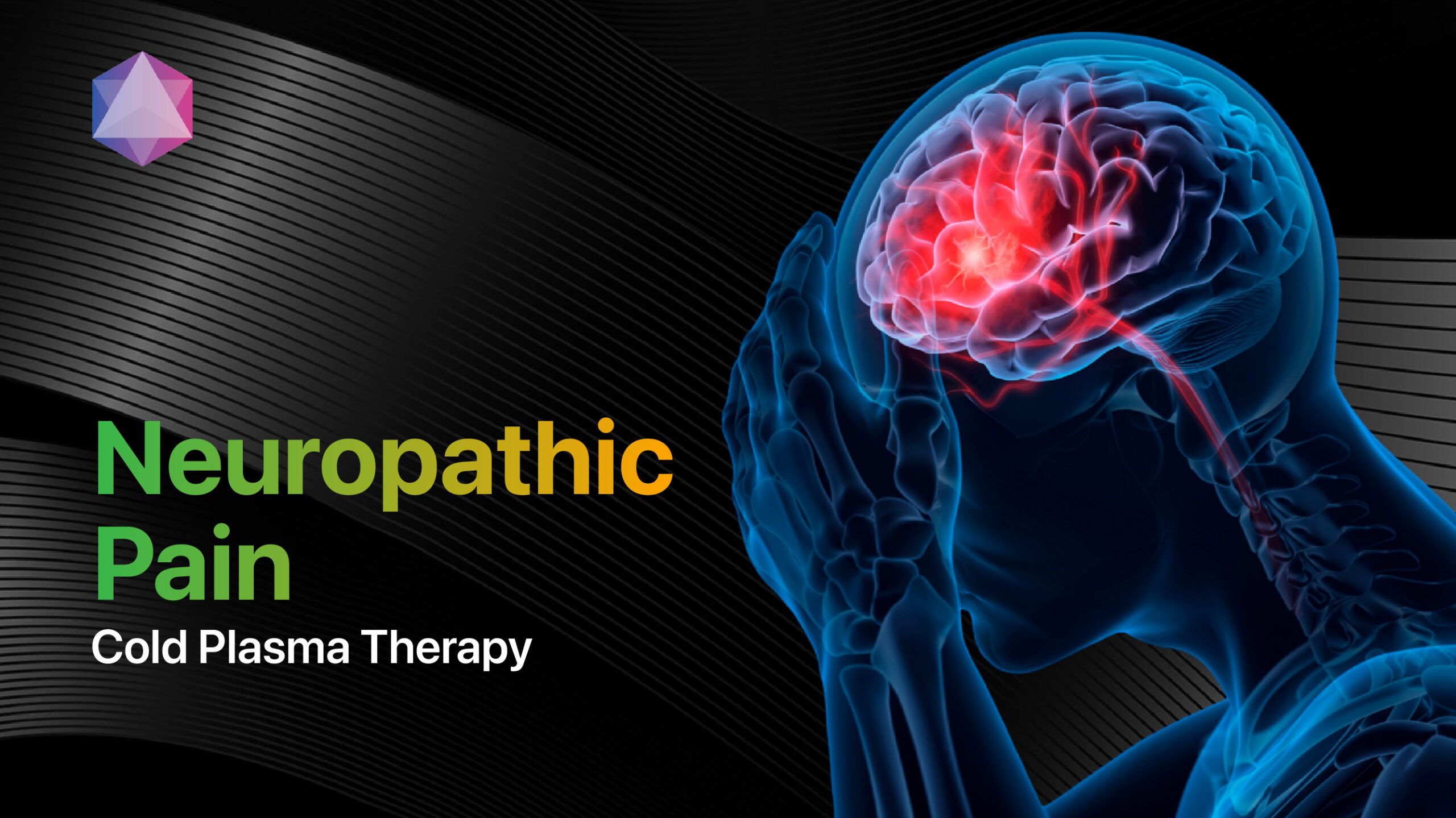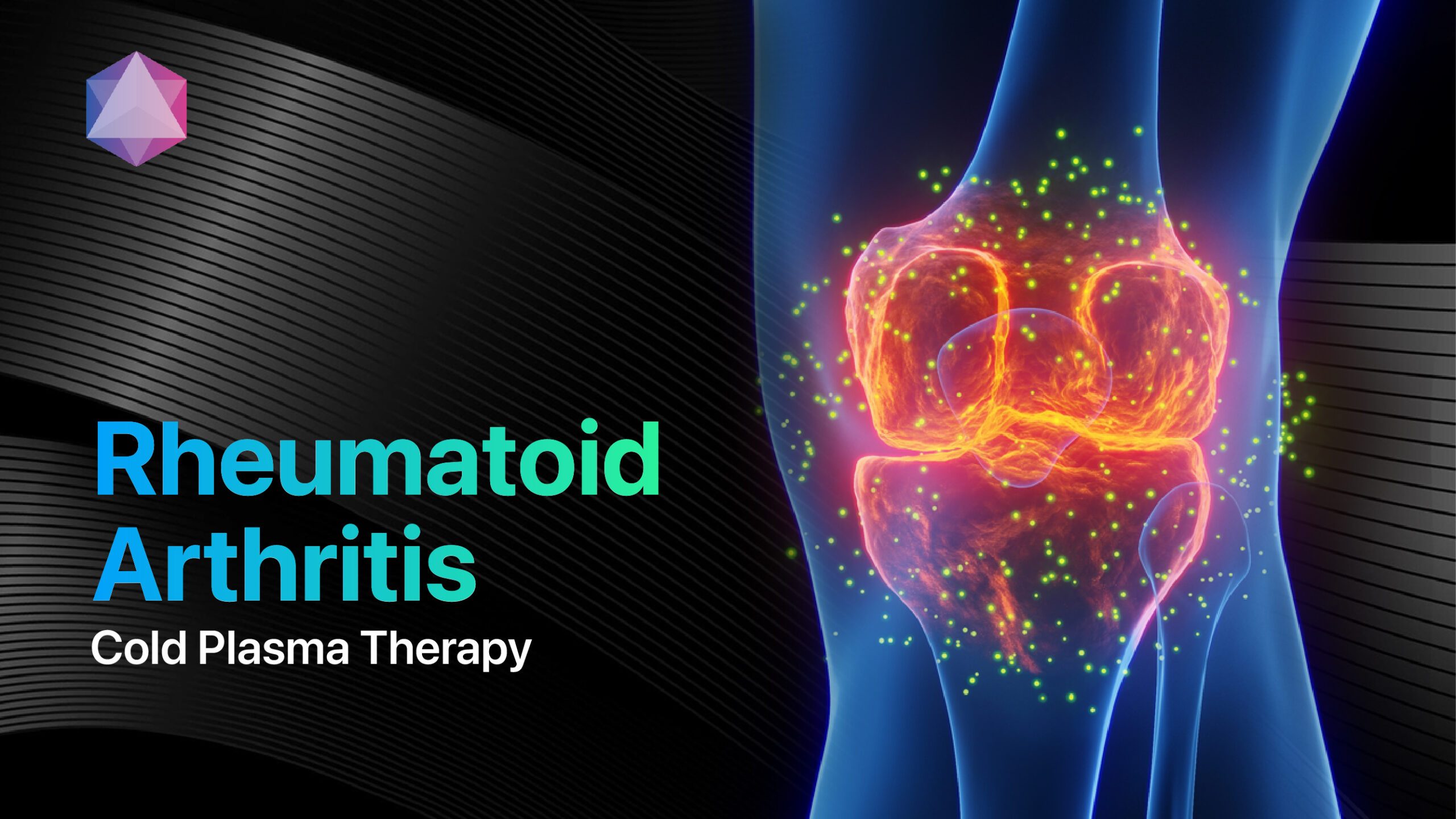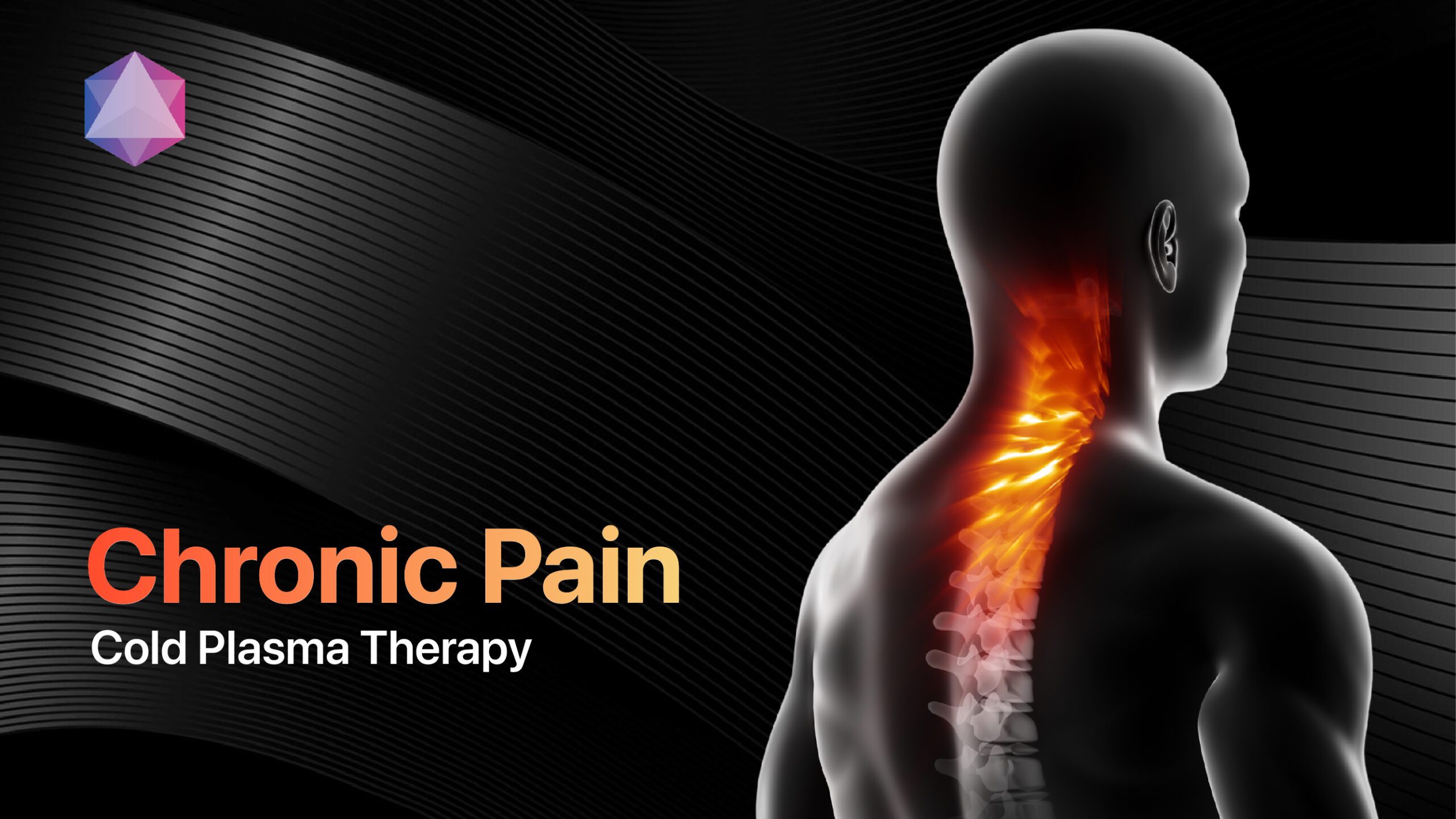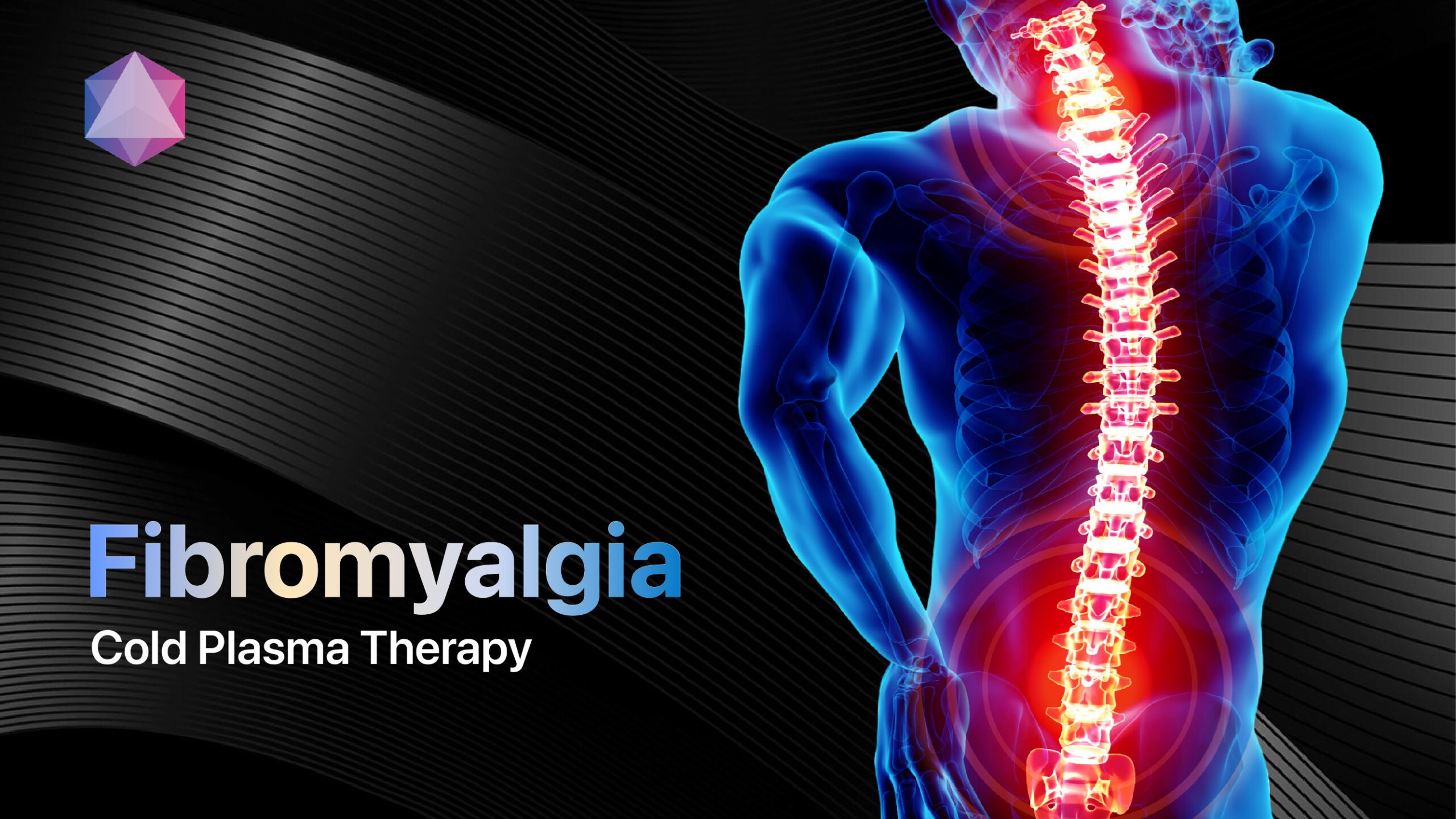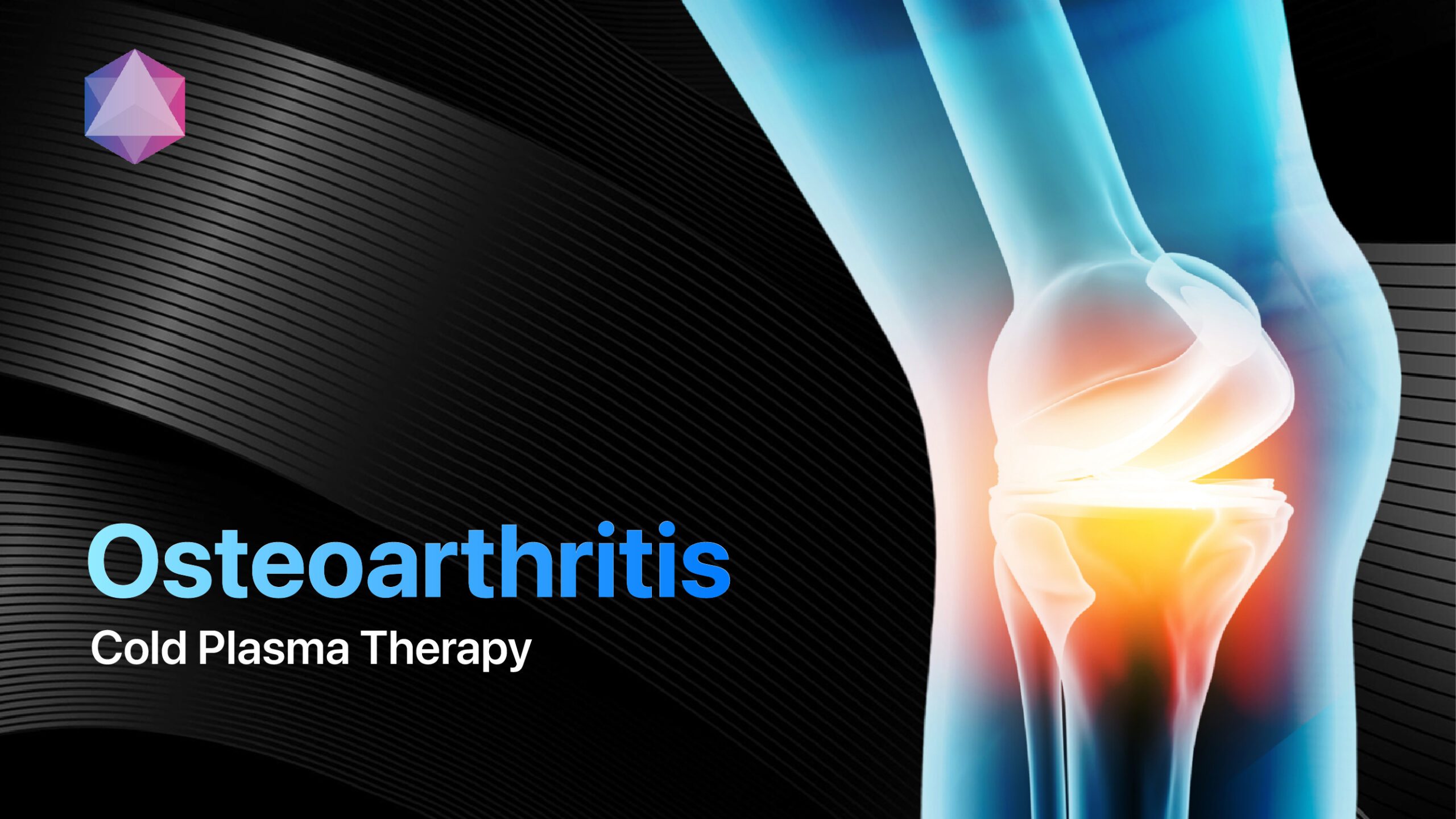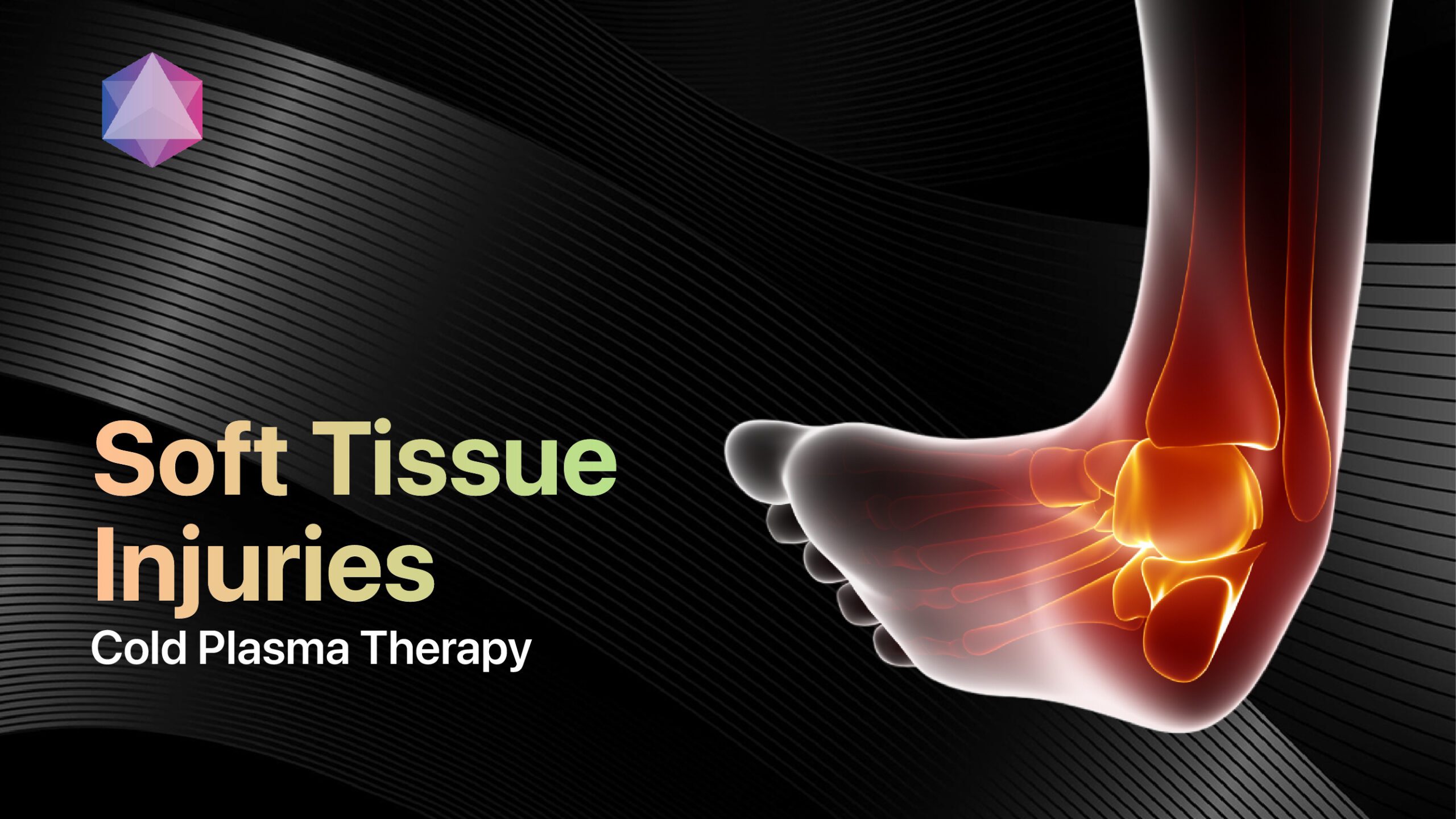
Soft tissue injury affects millions worldwide annually, representing damage to muscles, ligaments, tendons, and other connective tissues throughout the body[1][21]. These common injuries occur from sprains, strains, contusions, or overuse activities, resulting in pain, swelling, bruising, and loss of function[21][22]. Unlike bone fractures, soft tissue injury affects the flexible structures that support your skeleton and enable movement[1]. Modern treatment combines proven protocols with breakthrough technologies to accelerate healing and restore function.
Understanding soft tissue injury mechanisms and recovery strategies helps patients achieve optimal outcomes while preventing chronic complications.
Understanding Soft Tissue Injury Mechanisms
What Makes These Injuries So Common?
Soft tissue injury occurs when excessive force or overuse damages muscles, tendons, ligaments, or other connective tissues[37]. These structures work together to support your skeleton and enable smooth movement.
Key tissue types affected include:
- Muscles—contract to create movement
- Tendons—connect muscles to bones
- Ligaments—connect bones to other bones
- Fascia—surrounds and supports muscle groups
- Cartilage—cushions joints and enables smooth motion[1]
The body’s response involves inflammation, bleeding, and swelling as immune cells rush to begin repairs. This natural healing process creates characteristic symptoms but can become problematic if excessive or prolonged.
How Soft Tissue Injury Differs from Bone Fractures
Soft tissue injury has special obstacles compared to bone fractures:
- Invisible damage that doesn’t show on X-rays
- Variable healing times depending on tissue type
- Risk of chronic complications without proper treatment
- Complex rehabilitation needs for full function restoration[2]
The Mirari Cold Plasma System, developed by General Vibronics and commercialized through miraridoctor.com, offers revolutionary soft tissue injury treatment by generating therapeutic plasma that accelerates healing while reducing inflammation[8].
Comprehensive Soft Tissue Injury Types
Primary Injury Classifications
Soft tissue injury encompasses several distinct conditions with unique characteristics:
Sprains—Ligament Damage
Sprains occur when ligaments stretch or tear beyond normal limits[21]. Common locations include ankles, knees, and wrists from twisting motions.
Severity grades include:
- Grade 1 – slight stretching with minimal fiber damage
- Grade 2 – partial tearing with moderate pain and swelling
- Grade 3 – complete rupture requiring surgical intervention[21]
Strains—Muscle and Tendon Injury
Muscle strains result from overstretching or sudden contractions[21]. Back, hamstring, and calf muscles are particularly vulnerable during sports activities.
Contusions—Bruising and Bleeding
Direct blows cause bleeding under the skin and muscle damage[21]. Blood pools create characteristic discoloration that changes from purple to yellow during healing.
Tendinitis—Overuse Inflammation
Repetitive activities inflame tendons around joints[21]. Tennis elbow, golfer’s elbow, and Achilles tendinitis represent common presentations.
| Injury Type | Primary Symptoms | Common Locations | Typical Recovery Time |
|---|---|---|---|
| Sprains | Pain, swelling, bruising, joint instability[21] | Ankles, knees, wrists | 1-6 weeks |
| Strains | Pain, muscle weakness, cramping[21] | Back, hamstring, calf | 1-6 weeks |
| Contusions | Discoloration, swelling, tenderness[21] | Any muscle group | 1-3 weeks |
| Tendinitis | Pain during activity, morning stiffness[21] | Shoulders, elbows, ankles | Several weeks |
Revolutionary Understanding of Causes
Primary Triggering Mechanisms
Soft tissue injury develops through multiple pathways that overwhelm normal tissue capacity:
Acute Trauma
Sudden impacts, falls, and collisions create immediate tissue damage[27]. Sports injuries represent a major category, with contact sports showing the highest risk.
High-risk activities include:
- Football, rugby, and hockey
- Basketball and soccer
- Gymnastics and martial arts
- Motor vehicle accidents[27]
Repetitive Stress and Overuse
Repeated movements without adequate recovery create microscopic damage that accumulates over time[27]. Workplace activities and certain sports predispose to overuse injuries.
Common overuse patterns:
- Computer work causing wrist and neck strain
- Manual labor with heavy lifting
- Running and jumping sports
- Assembly line work with repetitive motions[37]
Improper Technique and Form
Poor body mechanics during exercise or work activities places excessive stress on tissues[27]. Inadequate warm-up and sudden activity increases also contribute significantly.
Advanced Risk Factor Analysis
Certain factors significantly increase soft tissue injury vulnerability:
Age-Related Changes
Older adults experience decreased tissue elasticity and slower healing rates[40]. Reduced muscle mass and coordination increase fall risk.
Physical Conditioning
Poor fitness levels reduce tissue resilience and recovery capacity[37]. Muscle imbalances create compensatory movement patterns that stress other structures.
Environmental Factors
Cold weather reduces tissue flexibility, while fatigue impairs coordination and judgment[37]. Inadequate equipment or improper workspace design contributes to injury risk.
Cutting-Edge Diagnostic Excellence
Modern Assessment Approaches
Accurate soft tissue injury diagnosis requires comprehensive evaluation combining clinical expertise with advanced testing[30]:
Clinical Examination
Skilled assessment identifies injury location, severity, and functional impact through:
- Pain patterns and intensity evaluation
- Range of motion testing in multiple directions
- Strength assessment comparing injured to uninjured sides
- Special tests specific to suspected injuries[28]
Symptom Recognition
Key indicators that distinguish soft tissue injury from other conditions:
- Immediate or delayed pain following activity
- Swelling developing within hours
- Bruising appearing 24-48 hours post-injury
- Functional limitations with specific movements[28]
Advanced Imaging Technologies
Modern diagnostic tools provide detailed tissue visualization when clinical assessment proves insufficient[30]:
MRI Scanning
Magnetic resonance imaging excels at showing soft tissue details that are invisible on X-rays[30]. MRI reveals disc damage, muscle tears, and ligament injuries with exceptional clarity.
Ultrasound Imaging
Real-time visualization allows dynamic assessment during movement[34]. Ultrasound distinguishes between different tissue types and identifies specific injury patterns.
CT Scanning
Computed tomography provides detailed cross-sectional images when bone involvement is suspected[30]. CT scans help identify complex injuries involving multiple tissue types.
Revolutionary Treatment Breakthroughs
Evidence-Based Acute Management
Modern soft tissue injury treatment follows updated protocols emphasizing optimal healing environments rather than complete rest[25]:
PEACE Protocol for Acute Phase
The revolutionary PEACE approach replaces traditional RICE methodology:
- Protect—avoid further damage through appropriate rest
- Elevate—raise injured limb above heart level
- Avoid anti-inflammatories—allow natural healing cascade
- Compress—use elastic bandaging to control swelling
- Educate—understand injury and recovery expectations[25]
LOVE Protocol for Recovery Phase
Ongoing management focuses on promoting optimal healing:
- Load—gradually return to activity within pain tolerance
- Optimism—positive expectations improve outcomes
- Vascularization—aerobic exercise enhances blood flow
- Exercise—progressive strengthening and mobility work[25]
Breakthrough Cold Plasma Technology
Cold plasma therapy represents a revolutionary advancement in soft tissue injury treatment. The Mirari Doctor platform utilizes atmospheric plasma, generating multiple therapeutic mechanisms:
- Enhanced tissue regeneration through cellular stimulation
- Pain reduction via neural pathway modulation
- Accelerated healing with improved collagen synthesis
- Anti-inflammatory effects reducing tissue swelling[8]
Clinical evidence shows remarkable results with 70% of patients achieving complete tissue repair within 14 days using cold plasma therapy[8]. All treated wounds became completely dry and painless within three weeks.
The nitric oxide-based approach offers significant advantages over traditional reactive oxygen species systems, providing enhanced safety while maintaining therapeutic efficacy[8].
Advanced Regenerative Treatments
2025 innovations include sophisticated approaches targeting specific healing mechanisms:
Platelet-Rich Plasma (PRP) Therapy
Concentrated growth factors from the patient’s own blood accelerate tissue repair[6]. PRP injections show particular effectiveness for tendon injuries and chronic conditions.
Prolotherapy
Dextrose-based solutions stimulate natural healing responses[6]. This regenerative approach helps address chronic pain while promoting tissue regeneration.
Hydrofascial Release
Precision-guided injections release fascial restrictions and scar tissue[39]. This minimally invasive technique addresses complex chronic conditions affecting multiple tissue layers.
| Treatment Modality | Primary Mechanism | Success Rate | Best Applications |
|---|---|---|---|
| PEACE/LOVE Protocol | Natural healing optimization[25] | 80-90% acute injuries | All acute soft tissue injuries |
| Cold Plasma Therapy | Multi-modal cellular stimulation[8] | 70% complete healing in 14 days | Acute and chronic conditions |
| PRP Therapy | Growth factor enhancement[6] | 60-80% improvement | Tendon injuries, chronic pain |
| Physical Therapy | Progressive rehabilitation[31] | 70-85% functional recovery | All injury types |
Comprehensive Rehabilitation Excellence
Progressive Recovery Strategies
Successful soft tissue injury rehabilitation requires systematic progression through distinct healing phases[31]:
Acute Phase Management (0-72 hours)
Immediate care focuses on damage control and healing environment optimization:
- Pain and swelling control through appropriate interventions
- Protection from further injury with modified activities
- Early gentle movement within comfort limits
- Patient education about realistic expectations[31]
Subacute Phase (3 days – 6 weeks)
Progressive mobilization begins restoring function:
- Range of motion exercises preventing stiffness
- Gentle strengthening for supporting muscles
- Gradual activity increase based on symptoms
- Manual therapy addressing restrictions[42]
Chronic Phase (6 weeks+)
Advanced rehabilitation prepares for full activity return:
- Sport-specific training for athletes
- Work conditioning for occupational demands
- Prevention strategies reducing reinjury risk
- Long-term maintenance programs[10]
Specialized Treatment Techniques
Modern rehabilitation incorporates evidence-based manual therapy approaches:
Instrument-Assisted Soft Tissue Mobilization
Graston Technique and similar approaches break up scar tissue and fascial restrictions[42]. Research demonstrates improved range of motion and function.
Active Release Technique (ART)
Targeted manual therapy addresses muscle adhesions and overuse patterns[42]. ART proves effective for both acute and chronic conditions.
Astym Therapy
Instrument-assisted treatment specifically targets underlying causes rather than just symptoms[42]. This approach shows particular benefit for chronic conditions.
Prevention and Risk Reduction Excellence
Primary Prevention Strategies
Preventing soft tissue injury proves far more effective than treating established conditions[43]:
Workplace Injury Prevention
Comprehensive programs address multiple risk factors:
- Ergonomic assessments optimizing work environments
- Proper lifting techniques reducing spine stress
- Regular breaks preventing overuse injuries
- Equipment modifications improving safety[41]
Sports Injury Prevention
Athletic programs focus on conditioning and technique:
- Adequate warm-up and cool-down routines
- Progressive training, avoiding sudden increases
- Cross-training prevents overuse patterns
- Proper equipment and playing surfaces[37]
Lifestyle Modifications
Individual choices significantly impact injury risk:
Physical Conditioning
Regular exercise maintains tissue health and resilience:
- Cardiovascular fitness supporting tissue nutrition
- Strength training providing structural support
- Flexibility work maintaining tissue extensibility
- Balance training preventing falls[31]
Nutritional Support
Proper nutrition provides building blocks for tissue repair:
- Adequate protein for tissue synthesis
- Vitamin C supporting collagen formation
- Omega-3 fatty acids reducing inflammation
- Hydration maintaining tissue function[31]
Long-Term Prognosis and Management
Recovery Expectations
Most soft tissue injuries heal successfully with appropriate treatment, though timelines vary significantly:
Favorable Prognostic Factors
- Young age and good general health
- Acute rather than chronic injury patterns
- Early appropriate treatment initiation
- Good compliance with rehabilitation programs[31]
Challenging Presentations
Certain conditions require extended management:
- Neck injuries showing only 12% complete recovery at 10-year follow-up[40]
- Complex trauma with multiple tissue involvement
- Chronic conditions with established dysfunction patterns[32]
Chronic Complication Prevention
Early aggressive treatment prevents transition to chronic pain syndromes:
- Comprehensive initial care addressing all injury aspects
- Progressive rehabilitation maintaining function
- Psychological support addressing pain-related anxiety
- Long-term monitoring for emerging complications[31]
FAQ: Essential Questions About Soft Tissue Injury
What are the main symptoms of soft tissue injury?
Soft tissue injury symptoms include pain when moving the affected area, swelling that may develop immediately or over several hours, bruising from bleeding under the skin, and muscle weakness or spasms[28][33]. Additional signs include inability to bear weight or use the injured part normally, stiffness, and possible numbness or tingling[2]. Severe symptoms requiring immediate medical attention include excessive swelling, obvious deformity, or inability to move without severe pain.
What causes soft tissue injury to develop?
Soft tissue injury results from trauma such as falls, accidents, and sports impacts, or repetitive stress from overuse activities[27][37]. Common causes include improper lifting techniques, poor form during exercise, sudden movements, and workplace activities[27]. Risk factors include age, poor physical conditioning, fatigue, and inadequate warm-up before activities[37].
What are the most effective treatments for soft tissue injury?
Most effective soft tissue injury treatment follows the PEACE and LOVE protocols rather than outdated RICE approaches[25]. Acute management includes protection, elevation, avoiding anti-inflammatories, compression, and education[25]. Revolutionary cold plasma therapy shows 70% complete healing within 14 days[8]. Advanced options include PRP therapy, physical therapy, and manual treatment techniques for optimal recovery[6][42].
How long does soft tissue injury take to heal?
Soft tissue injury recovery typically ranges from 1 to 6 weeks for most acute injuries, though severity and location significantly affect timelines[23][7]. Grade 1 injuries heal in 1-2 weeks, while Grade 2 injuries require 3-4 weeks[7]. Grade 3 injuries need much longer recovery times and may require surgical intervention. Factors affecting healing include age, general health, injury severity, and treatment compliance[31].
Can soft tissue injury be prevented effectively?
Yes, soft tissue injury prevention achieves significant risk reduction through comprehensive workplace programs, proper conditioning, and technique training[43][41]. Key strategies include adequate warm-up, progressive training increases, ergonomic workplace design, and maintaining good physical fitness[37]. Early intervention for minor symptoms prevents progression to serious injury. Lifestyle factors like proper nutrition, hydration, and avoiding smoking also support injury prevention[31].
Soft tissue injury represents a complex but manageable condition requiring comprehensive understanding of modern treatment approaches. Revolutionary advances from cold plasma therapy to evidence-based PEACE/LOVE protocols offer unprecedented healing potential. Early recognition combined with appropriate intervention enables most patients to achieve excellent functional recovery while preventing chronic complications that affect long-term quality of life.
References
- Cleveland Clinic. (2025). Soft Tissue Injury: What It Is, Types, Causes & Treatment. Available at: https://my.clevelandclinic.org/health/diseases/soft-tissue-injury
- MSD Manuals. (2023). Overview of Sprains and Other Soft-Tissue Injuries. Available at: https://www.msdmanuals.com/home/injuries-and-poisoning/sprains-and-other-soft-tissue-injuries/overview-of-sprains-and-other-soft-tissue-injuries
- ScienceDirect. (2025). Soft Tissue Injury – an overview. Available at: https://www.sciencedirect.com/topics/medicine-and-dentistry/soft-tissue-injury
- Sports Medicine Australia. (2025). Soft Tissue Injuries. Available at: https://sma.org.au/resources/injury-fact-sheets/soft-tissue-injuries/
- PubMed. (1986). Acute soft tissue injuries–a review of the literature. Available at: https://pubmed.ncbi.nlm.nih.gov/3534506/
- LI Spine Medicine. (2025). Treatments for Soft Tissue Injuries: PRP and Prolotherapy. Available at: https://www.lispinemed.com/2025/02/25/regenerative-medicine-for-soft-tissue-injuries-prp-and-prolotherapy-options/
- The Physiotherapy Clinics. (2024). Soft Tissue Injuries. Available at: https://thephysiotherapyclinics.com/soft-tissue-injuries/
- Mirari Doctor. (2025). Soft Tissue Injury Recovery: Revolutionary Cold Plasma. Available at: https://miraridoctor.com/soft-tissue-injury/
- ScienceDirect. (2025). Soft Tissue Injury – an overview. Available at: https://www.sciencedirect.com/topics/nursing-and-health-professions/soft-tissue-injury
- Lattimore Physical Therapy. (2025). 5 Types of Soft Tissue Injury & Treatments. Available at: https://lattimorept.com/5-types-soft-tissue-injury-and-treatments/
- Medical News Today. (2024). Soft tissue injury: Symptoms, causes, treatment, and more. Available at: https://www.medicalnewstoday.com/articles/soft-tissue-injury
- Mirari Doctor. (2025). Mirari Cold Plasma vs Ultrasound Therapy. Available at: https://miraridoctor.com/mirari-cold-plasma-vs-ultrasound-therapy/
- Merck Manuals. (2023). Overview of Sprains and Other Soft-Tissue Injuries. Available at: https://www.merckmanuals.com/professional/injuries-poisoning/sprains-and-other-soft-tissue-injuries/overview-of-sprains-and-other-soft-tissue-injuries
- PubMed. (2025). Treatment strategies for soft tissue injuries associated with blunt. Available at: https://pubmed.ncbi.nlm.nih.gov/39849228/
- Neurosurgery Associates. (2022). Soft Tissue Injuries- Causes and Symptoms. Available at: https://www.neurosurg.org/blog/soft-tissue-injuries–causes-and-symptoms/?bp=29479
- YouTube. (2024). Managing Soft tissue injuries using cold plasma therapy. Available at: https://www.youtube.com/watch?v=_feHCV2tQh8
- OS Clinic. (2025). Joint soft tissue pain: a comprehensive, expert overview. Available at: https://os.clinic/resources/joint-soft-tissue-pain-a-comprehensive-expert-overview/
- Health New Zealand. (2025). Soft tissue injuries and treatment. Available at: https://info.health.nz/conditions-treatments/emergencies-and-first-aid/soft-tissue-injuries-treatment
- Mr Nirav Shah. (2025). Soft tissue injuries. Available at: https://www.mrniravshah.co.uk/soft-tissue-injuries/
- YouTube. (2025). Mirari Doctor. Available at: https://www.youtube.com/@miraridoctorofficial
- Wikipedia. (2004). Soft tissue injury. Available at: https://en.wikipedia.org/wiki/Soft_tissue_injury
- AAOS. (2020). Sprains, Strains & Other Soft-Tissue Injuries. Available at: https://orthoinfo.aaos.org/en/diseases–conditions/sprains-strains-and-other-soft-tissue-injuries/
- Perth Children’s Hospital. (2025). Soft tissue injuries (sprains and strains). Available at: https://pch.health.wa.gov.au/-/media/Files/Hospitals/PCH/General-documents/Patients-and-Families/Health-facts/Sprains-and-strains—soft-tissue-injuries.pdf
- Oxford University Hospitals. (2025). Soft tissue injuries. Available at: https://www.ouh.nhs.uk/media/fi3cpfjb/86574psofttissue.pdf
- BMJ. (2020). Soft-tissue injuries simply need PEACE and LOVE. Available at: https://bjsm.bmj.com/content/54/2/72
- Greater Austin Pain. (2024). Soft Tissue Injuries: Causes, Symptoms, and Treatment. Available at: https://www.greateraustinpain.com/blog/soft-tissue-injuries
- Greater Austin Pain. (2024). Soft Tissue Injuries: Causes, Symptoms, and Treatment. Available at: https://www.greateraustinpain.com/blog/soft-tissue-injuries
- Shephard Health. (2025). Symptoms Of Soft Tissue Injury. Available at: https://shephardhealth.com/blog/symptoms-of-soft-tissue-injury
- Your Physio. (2025). Managing a soft tissue injury. Available at: https://www.yourphysio.org.uk/new-pain-problem/managing-a-soft-tissue-injury/
- Springs Law Group. (2025). How Are Soft Tissue Injuries Diagnosed? Available at: https://springslawgroup.com/blog/how-are-soft-tissue-injuries-diagnosed/
- PhysioWorks. (2024). Soft Tissue Injury Healing – Your Guide By PhysioWorks! Available at: https://physioworks.com.au/treatment/acute-injury/soft-tissue-injury-healing/
- PubMed. (2025). Severe soft tissue injuries in multiple trauma patients-a challenge. Available at: https://pubmed.ncbi.nlm.nih.gov/39991058/
- UPMC Children’s Hospital. (2025). Soft Tissue Injuries. Available at: https://www.chp.edu/our-services/orthopaedic-trauma-program/services/soft-tissue-injuries
- Mayo Clinic. (2022). Muscle strains – Diagnosis and treatment. Available at: https://www.mayoclinic.org/diseases-conditions/muscle-strains/diagnosis-treatment/drc-20450520
- Banner Health. (2025). Sports Soft Tissue Injury & Prevention. Available at: https://www.bannerhealth.com/services/sports-medicine/sports-injuries/soft-tissue-injury
- Frontiers. (2025). Severe soft tissue injuries in multiple trauma patients. Available at: https://www.frontiersin.org/journals/medicine/articles/10.3389/fmed.2025.1508172/pdf
- KC Rehab PT. (2025). Soft Tissue Injuries: What 9 Factors May Cause Them? Available at: https://www.kcrehabpt.com/post/soft-tissue-injuries-what-9-factors-may-cause-them
- IJORO. (2025). Holistic approach to managing acute soft tissue injury: PEACE and. Available at: https://www.ijoro.org/index.php/ijoro/article/view/3505
- Fascia Institute. (2025). Soft Tissue Injury Treatment: Hydrofascial Release & Hydrodissection. Available at: https://fasciainstitute.org/services/soft-tissue-injury-treatment/
- PubMed. (1990). Long-term prognosis of soft-tissue injuries of the neck. Available at: https://pubmed.ncbi.nlm.nih.gov/2211780/
- West Virginia Insurance. (2025). Soft tissue injury prevention. Available at: https://www.wvinsurance.gov/Portals/0/SAWC/strains.pdf
- IMPACT Physical Therapy. (2025). The Most Effective Soft Tissue Treatments. Available at: https://www.impactphysicaltherapy.com/effective-soft-tissue-treatments/
- Harvard School of Public Health. (2023). Soft Tissue Injury Prevention. Available at: https://centerforworkhealth.sph.harvard.edu/sites/default/files/Soft%20Tissue%20Injury%20Preventions.pdf
- NHS. (2024). Sprains and strains. Available at: https://www.nhs.uk/conditions/sprains-and-strains/
Related articles
Made in USA


